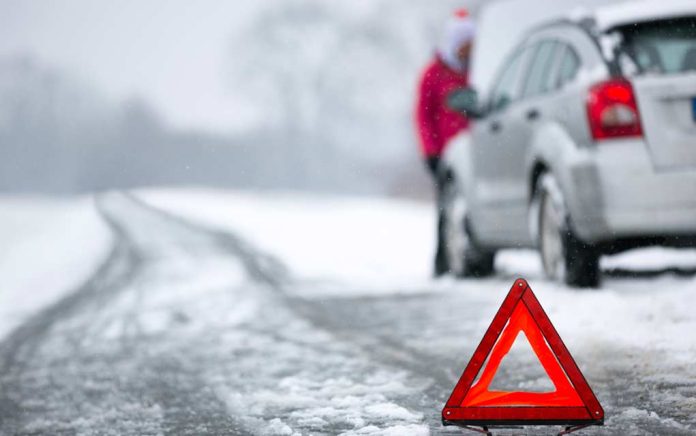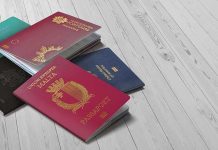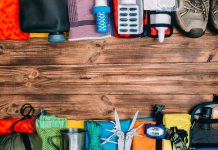
(TacticalNews.com) – Winter is coming, and with it comes freezing temperatures, snow, ice, and slick roads in many regions. Driving in a nasty winter storm can force you off the road, or lead to an accident. Should the worst happen, are you prepared to survive?
In the following video, SensiblePrepper outlines the items everyone should keep in their cars during the winter months:
Preparing for a winter roadway emergency begins before ever stepping foot inside the vehicle. Wearing the appropriate clothing for the environment is essential. No one wants to change a tire in a t-shirt when there is a foot of snow on the ground. Wearing wool clothing, waterproof shoes, good gloves and a heavy winter coat is a good way to stay warm if you get stuck on the side of the road. Keep back-up clothing in the car in case what you’re wearing gets wet.
The most important items to pack in an emergency winter kit are things that will keep you warm and dry. A space blanket will trap body heat in, and they are quite small, so it’s easy to pack them. A simple trash bag will keep rain and snow off of you if you’re forced from the vehicle due to unforeseen circumstances. Tarps are another great option to stay dry if forced outside.
Next, include firestarters in your kit. This can be as simple as keeping a lighter in your pocket. It’s important to have some redundancy here—meaning, multiple ways to start a fire. If a lighter runs out of fluid, it won’t be much good—so pack more than one. Some cotton balls packed in petroleum jelly are another way to help start a fire when it’s wet outside, so long as you have a way to ignite it.
Other items that should be stored in the car for emergencies include:
- Water.
- Food. Protein bars or emergency meals-ready-to-eat (MREs) make great options.
- Portable Saw. If you get stuck in the middle of nowhere, chances are you may have to cut some firewood to stay warm. Better to be prepared than to hack on branches with a pocketknife.
- A crowbar in case it becomes necessary to pry your way out of a damaged vehicle.
- Flashlight and/or headlamp with extra batteries.
- Portable battery charger for cellphones and corresponding cords.
- Glow sticks and road flares for flagging down help.
- A map of the area.
Emergencies strike when they’re least expected, especially in winter. Taking precautions ahead of time can mean the difference between staying safe until help arrives and suffering hypothermia (or worse).
For more information about road safety in winter, click here.
Do you have an emergency kit in your vehicle? Do you think it’s a good idea to get one if you don’t? Reply to your email and share your thoughts, we would love to hear from you!
Copyright 2021, TacticalNews.com



















